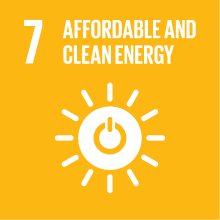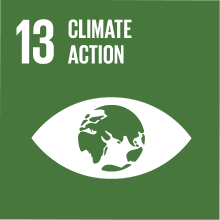CLIMATE CHANGE ECONOMICS: THEORY, METHODS AND APPLICATIONS
- Academic year
- 2019/2020 Syllabus of previous years
- Official course title
- CLIMATE CHANGE ECONOMICS: THEORY, METHODS AND APPLICATIONS
- Course code
- PHD088 (AF:324777 AR:170748)
- Modality
- On campus classes
- ECTS credits
- 6
- Degree level
- Master di Secondo Livello (DM270)
- Academic Discipline
- SECS-P/01
- Period
- 1st Semester
- Course year
- 1
- Where
- VENEZIA
- Moodle
- Go to Moodle page
Contribution of the course to the overall degree programme goals
Expected learning outcomes
Pre-requirements
Contents
Welfare economics and basic concepts.
LECTURE 1 – Economic efficiency and economic concepts
LECTURE 2 – Public goods
ACTIVITY and homeworks: Hands on EKC and Kaya identity using R. Perpare a short discussion of your results based on the Kaya exercise
Week 2 - Why do we need environmental policies?
LECTURE 3 – Externalities and policy instruments (Standards, taxes, subsidies
LECTURE 4 – Policy instruments (Tradable permits),
ACTIVITY and homeworks: Hands on the EPS database. Read and prepare a short discussion of Schmalensee and Stavins vs Ellerman et al.
Week 3 - How can we decide about the implementation of environmental policies?
Environmental pollution: policy instrument design, overlapping regulations, environmental policy and innovation, the political economy of energy innovation.
LECTURE 5 – Policy instruments, innovation, institutions
LECTURE 6 – Introduction to IAMs and the debate on discounting
ACTIVITY: Students presentations of EPS analysis and Schmalensee and Stavins vs Ellerman et al. papers
Week 4 - How can we decide about the implementation of climate change policies? Role of models
Climate change as an economic, environmental problem. Focus on economy-wide modelling tools.
LECTURE 7 – Hands on GAMS and discussion on models
LECTURE 8– How to measures climate change costs and benefits
ACTIVITY: Simple DICE in GAMS
Referral texts
Required readings:
Schmalensee and Stavins, The SO2 Allowance Trading System: The Ironic History of a Grand Policy Experiment
Ellerman, D., C. Marcantonini, Aleksandar Zaklan; The European Union Emissions Trading System: Ten Years and Counting, Review of Environmental Economics and Policy, Volume 10, Issue 1, 1 January 2016, Pages 89–107, https://doi.org/10.1093/reep/rev014
Botta E. and Kozluk T. (2014), “Measuring Environmental Policy Stringency in OECD Countries: A Composite Index Approach”, OECD Economics Department Working Papers,No. 1177, OECD Publishing. http://dx.doi.org/10.1787/5jxrjnc45gvg-en
Ameli, N., Brandt, N., & Pascal, A. (2014). What Impedes Household Investment in Energy Efficiency and Renewable Energy ?, 101–138. https://doi.org/10.1561/101.00000067
Jaffe, A. B., & Stavins, R. N. (1994). The energy-efficiency gap What does it mean ?, 22(10), 804–810.
Dasgupta S., De Cian E. and Verdolini E. (2016), The Political Economy of Energy Innovation, in “The Political Economy of Clean Energy Transitions”, (eds) D. Arent, C. Arndt, M. Miller, F. Tarp, O. Zinaman, Oxford University Press and Nota di Lavoro 35.2016, Milan, Italy: Fondazione Eni Enrico Mattei
van Vuuren, D.P., 2015. Integrated Assessment: Back to the Future. Utrecht University.
Stern, N., 2008. The economics of climate change. American Economic Review: Papers and Proceedings 98 (2), 1_37.
Nordhaus, W. D., 1991. To slow or not to slow: the economics of the greenhouse effect. Economic Journal 101 (407), 920_937.
Nordhaus, WD (1993). Rolling the DICE: An Optimal Transition Path for Controlling Greenhouse Gases, Resource and Energy Economics, 15, 27-50.
Dellink, R (2004). GAMS for environmental-economic modeling, Wageningen University. Available from the instructor.
Weyant, J. (2017). Contributions of Integrated Assessment Models. Review of Environmental Economics and Policy, Volume 11, Issue 1, 1 January 2017, Pages 115–137, https://doi.org/10.1093/reep/rew018
Metcalf and Stock (2017). Integrated Assessment Models and the Social Cost of Carbon: A Review and Assessment of U.S. Experience. Review of Environmental Economics and Policy, Volume 11, Issue 1, 1 January 2017, Pages 80–99, https://doi.org/10.1093/reep/rew014
Further readings will be assigned in class.
Assessment methods
Type of exam
Teaching methods
Further information
2030 Agenda for Sustainable Development Goals
This subject deals with topics related to the macro-area "Climate change and energy" and contributes to the achievement of one or more goals of U. N. Agenda for Sustainable Development


